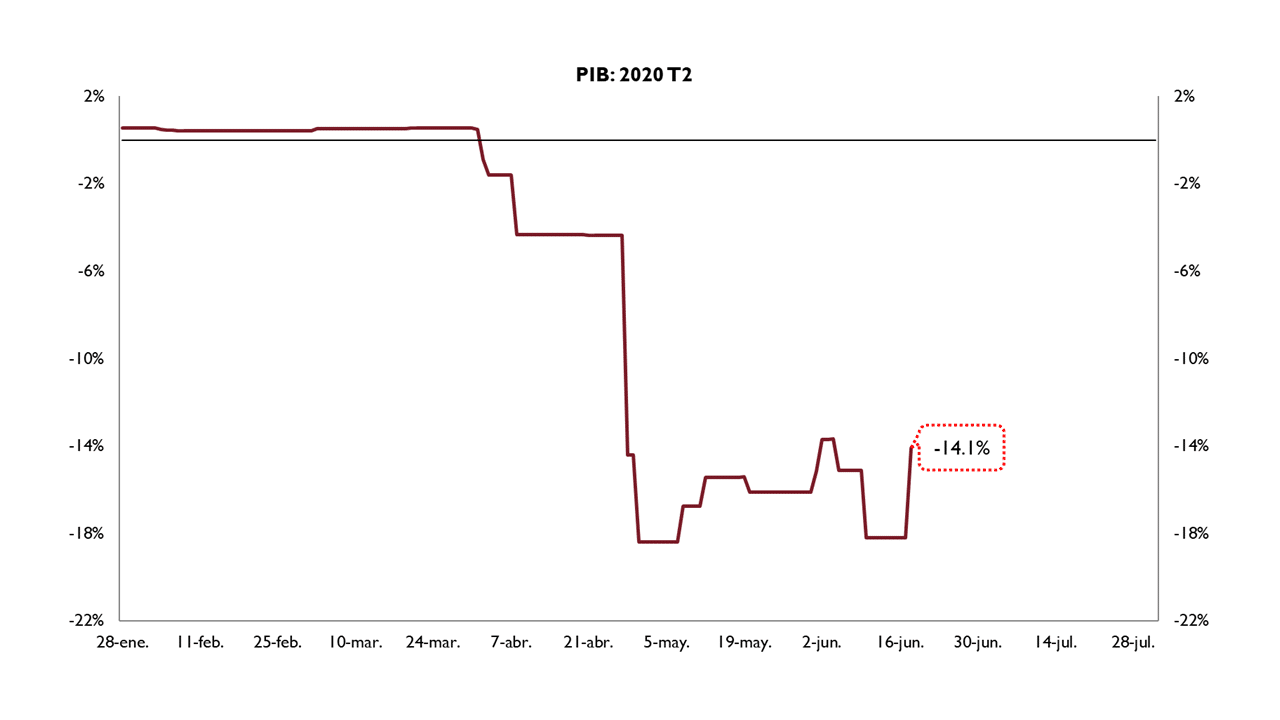
- The Independent Authority for Fiscal Responsibility processes labour market variables to determine the effect of ERTEs on employment and uses information on the de-escalation process
- The updated MIPred shows a drop in GDP of 14.1% in the second quarter
The Independent Authority for Fiscal Responsibility (AIReF) has resumed the publication of MIPRed, its real time model for forecasting the evolution of Gross Domestic Product, after adapting it to the new situation caused by COVID-19.
The economic policy measures aimed at reducing the impact of COVID-19 have affected its measurement and economic significance, so that neither the data on employment from the Labour Force Survey (LFS), nor Social Security affiliates reflect their economic impact.
In this context, AIReF, for the purposes of the model, assigns the same behaviour to the LFS series of employed persons as to the LFS seasonally adjusted series of hours actually worked. This is intended to determine the effect of ERTEs (Temporary Redundancy Plans) on employment.
In the case of Social Security affiliations, AIReF corrects the average affiliations for March so that the quarter-on-quarter rate of average affiliation for the first quarter results in a year-on-year rate of change identical to that shown by the LFS hours actually worked. In April and the following months it uses the series of average Social Security affiliations, subtracting the average figure of ERTEs by force majeure published by the Ministerio de Inclusión, Seguridad Social y Migraciones (Ministry of Inclusion, Social Security and Migration).
In addition, in order to make use of the information on the de-escalation process and the possible recovery that this would entail for almost all the indicators in the model, AIReF has carried out a statistical intervention analysis of the services PMI time series. This assumption will be revised, incorporating the observations into future MIPred estimates.
This process has been implemented since early May, recalculating the impact on the estimate of the quarter-on-quarter rate for the second quarter as the various indicators have been observed. After the update, the estimate provided by the model for the second quarter is 14.1%.
The model’s estimates are in line with the scenarios presented by AIReF as part of the presentation of the report on the Stability Programme on 6 May.
The MIPred model
Since the beginning AIReF, within the general approach of transparency and dissemination of the methods and principles used in the framework of its mandate, has been providing users with the results of its quarterly GDP growth forecast, based on a combination of public and evidence-based short-term information on various indicators. This estimate is based on a dynamic factorial model, MIPred (see, “Working Paper 4/2015. Integrated short-term forecasting model of the Spanish economy”), enables better monitoring of the economic situation, based on the availability of official statistical data.
The COVID-19 outbreak has temporarily disrupted economic activity estimation exercises by creating two distinct problems: changes in the data used to approximate economic activity and alteration of the relationships between variables as a result of lockdown measures. Both factors have prompted many institutions to stop publishing the results of their real-time GDP estimation models.
Related documents:
.





